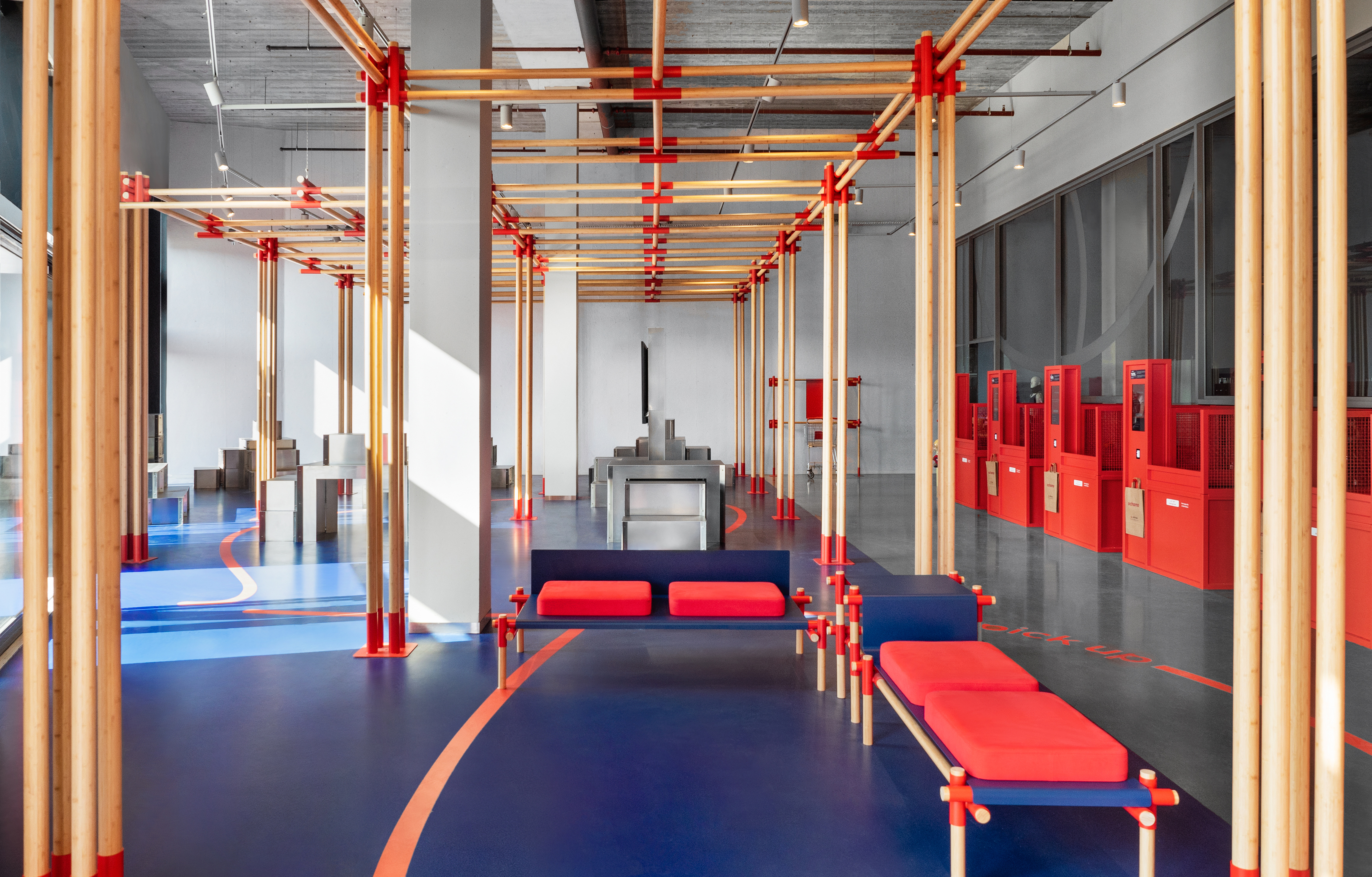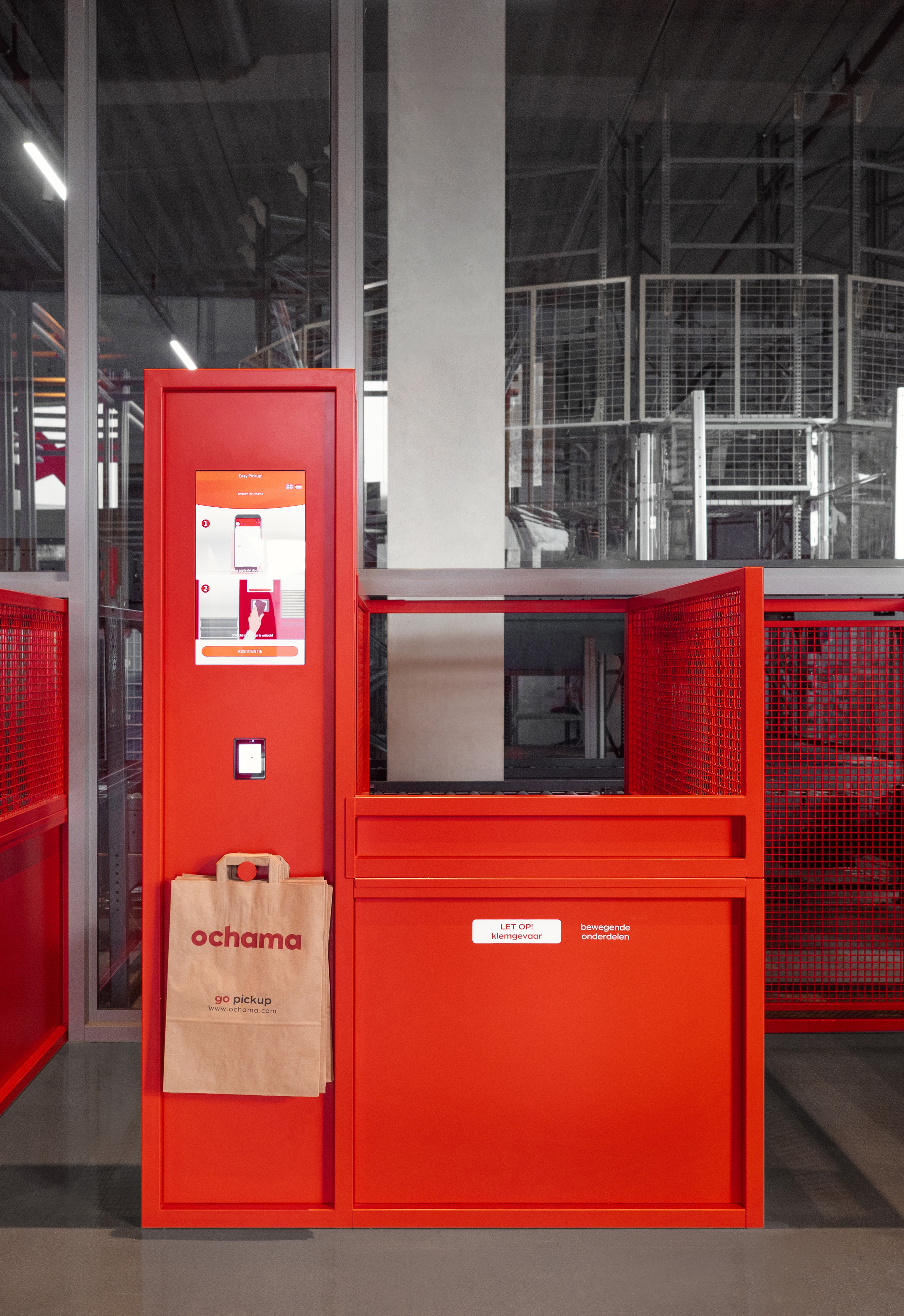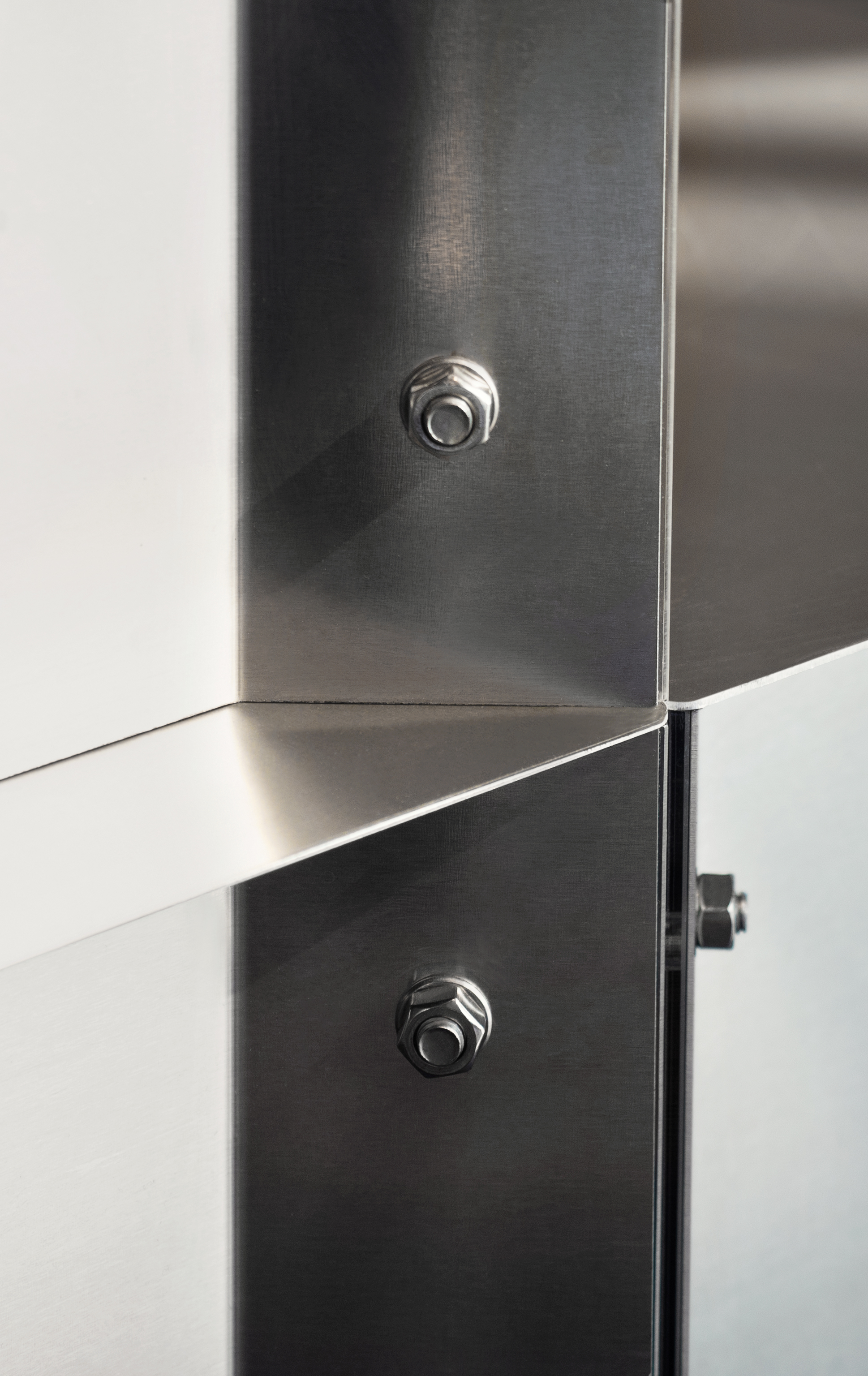OCHAMA 荷兰OCHAMA全渠道自提零售店
2022年1月10日,位于荷兰阿姆斯特丹、莱顿、⿅特丹和乌特勒⽀市的四家Ochama 全渠道⾃提零售店开业。Ochama作为京东集团全新的国际零售品牌, 致⼒于 “在零售业态中引入⼯业⾃动化和零售科技,为消费者提供更高的价值和更低的价格”。其核⼼策略之⼀是开设实体⾃提零售店(配合其线上购物平台),让消费者可以实时把控商品品质并享受全天24 ⼩时提货的便利。 同时,Ochama建⽴了⼀套可满⾜多重需求的零售店模型系统,包含市中心商场及社区的⼩型前置自提店,和具有完整陈列展厅及客户服务的配送中⼼。我们创造了一个具有典型荷兰⻛格的设计概念,既“赞美⽇常事物的简单和纯粹”。来自于Storeage亚太区合伙⼈康⼒先⽣所说:“荷兰有句谚语:’doe maar gewoon dan doe je al gek genoeg’(保持平常,这就已经很特别了)。整体空间以红、蓝两色呼应品牌的视觉语言,走进店中抬眼便是随处可见的竹质货架,这些精巧而轻盈地竹架经过过后期处理,泛出柔润而温暖的色泽。有序地排布方式和类似中国屏风的半透明样式,让人们在穿行其间时体会中国传统氛围的当代诠释。精细的竹材质与粗狂的混凝土共处一室,也于无声之中轻易抵消了金属、混凝土的粗糙与钝重感。为了视觉化这⼀设计原则,我们创造了⼀个简洁的”红⾊加号CONNECTOR“作为核⼼设计元素,它不仅是品牌的核心符号同时也被用作整体设计的关键联接点。CONNECTOR 的原型其实是中国古建筑的“斗拱”结构,可以根据需要灵活调节尺寸、实现承重需求,这一发明于两千多年前战国时期的特有构件,通常被用作体量较大的建筑物与屋顶之间的过渡工具,位于柱与梁之间,将上层构架传下来的荷载传给柱子,再由柱子传到基础。以灵巧的方式实现大型建筑中承上启下,结构转换的功能。除了被应用于竹制道具系统的结构连接,CONNECTOR也被频繁衍生至品牌平⾯视觉和视频动画,凸显成为链接产品与促销活动、产品与故事、产品与消费者的品牌符号。”考虑到无论是Ochama让利消费者的优势价格,还是实现全前仓后店的配送体系,都归根于京东集团背后的自动化技术。为了展示Ochama品牌的自信源头,Storeage 提出将技术置于消费者面前 —— 全机器人的店内服务,取货柜及背后的传送机械展示,机械臂分拣货品的全过程,所有融入到消费体验中,融入设计空间中。通过简单⽽精确的材料选择,我们让Ochama更加本⼟化,表现出荷兰零售的经典品质。同时通过丰富的差异化细节让消费者意识到这不仅仅只是另⼀次的跨国商业尝试,⽽是⼀个拥有丰富零售经验的国际零售巨头在欧洲的本⼟落地。
Amsterdam, 10 January 2022 - Storeage-group, the global brand and retail design agency with offices in Shanghai, Los Angeles and Amsterdam to create the introduction of the Ochama pick-up shops in Europe. Ochama, a new brand under JD.com, prides itself to “apply industrial automation to the retail market, resulting in a price benefit to the consumer”. As the purveyor quality everyday products Ochama has the one goal of making the purchase of these products as painless as possible without sacrificing on the need for quality control and accessibility. Part of that strategy is the opening of physical stores (amidst an online availability) to offer consumers the option to control product quality and 24-hour pick-up.Ranging from small city centre stores to peripheral distribution centres with full fletched showrooms/pick-up centres the retail model is set up to cater to all needs. o illustrate this principle we designed a simple red three-dimensional plus element as the connector, providing structure to the bamboo furniture but also introducing opportunities for motion graphics, connecting products to promotions, products to stories and ultimately products to people.The interior of the stores is highlighted by red and blue paint to echo the brand's visual language. Shelves made of bamboo are easily spotted once people step into the stores. The bamboo was processed for a soft and warm tone.
The selves are set in an orderly fashion, and their semi-transparent style, similar to a Chinese screen, allows people to wander around and enjoy the contemporary interpretation of traditional Chinese culture. The softness and subtleness of the bamboo also neutralized the heaviness and roughness of the metal and concrete.Storeage created a red crossing structure named CONNECTOR to tie the bamboo poles, and it can be adjusted with remarkable agility for weight-carrying. Its prototype is Dougong, an interlocking wooden bracket used in ancient Chinese architecture.
Dougong was invented over 2,000 years ago during the Warring States Period and was often used in large buildings to frame the roof. The brackets are placed between pillars and beams to transfer the weight from the upper part of the building to the base through the pillars. Different structures in the building are well connected in such a flexible way.
Apart from the CONNECTOR and bamboo gadgets used in both furnishings and main structures of the stores, metal showcases are thoughtfully placed to match the display of products. Storeage takes advantage of the differences in the height of the cases to create several levels of visual stimulation to better guide the customers. Focal displays are set up in each area of the store. The arrangement of various scenes makes the store a customer-friendly space and helps to fuel the possibility of spending.The designers of Ochama choose to return to the basics in design instead of placing priority on the visuals or spending much of their time creating a space simply for aesthetic experience. The design philosophy of Ochama is supported by technology, market research, and studies on consumer psychology, as well as special elements from China and the Netherlands. This makes Ochama an experience-oriented project based on consumption habits, customer service, and people's feelings about space.

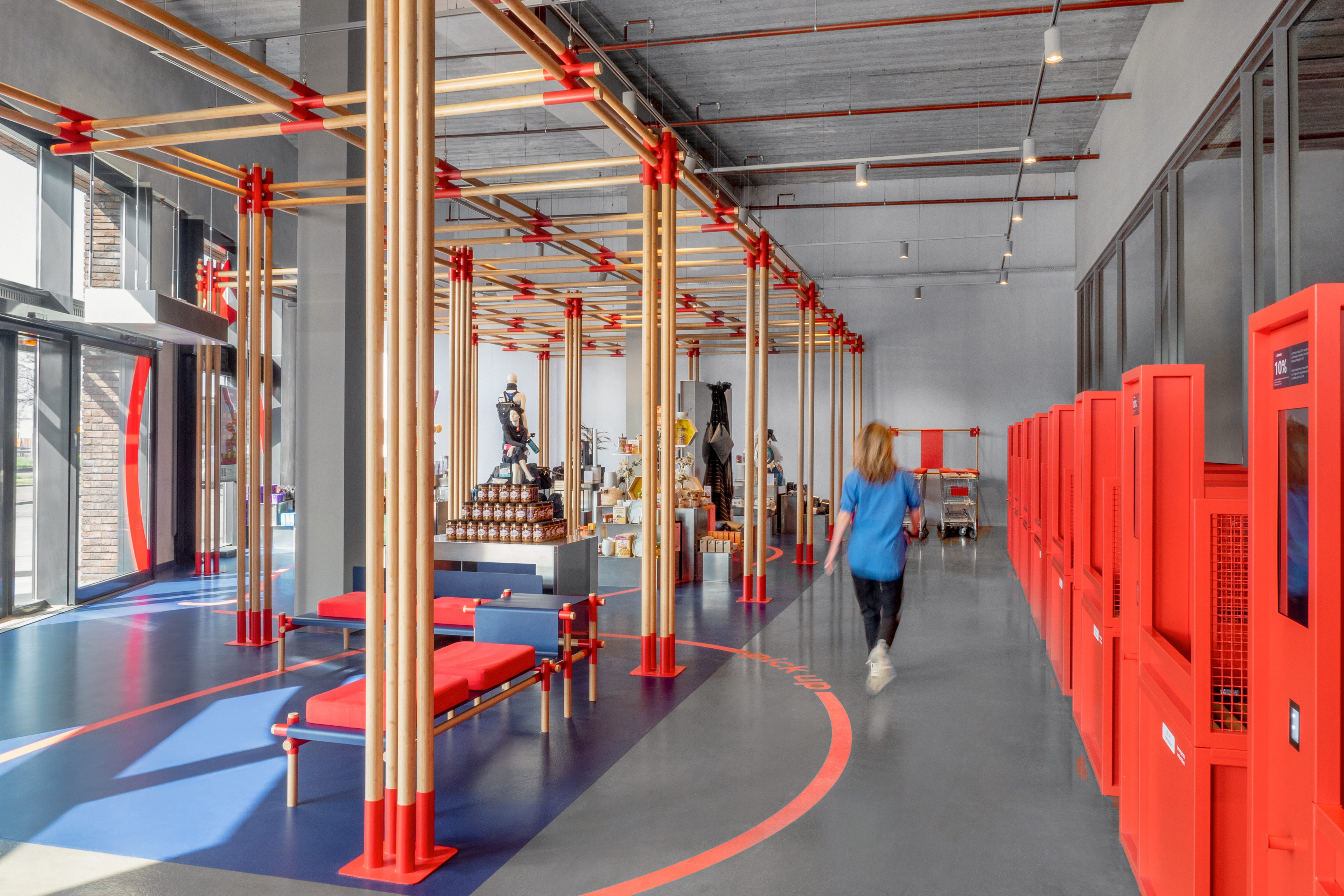

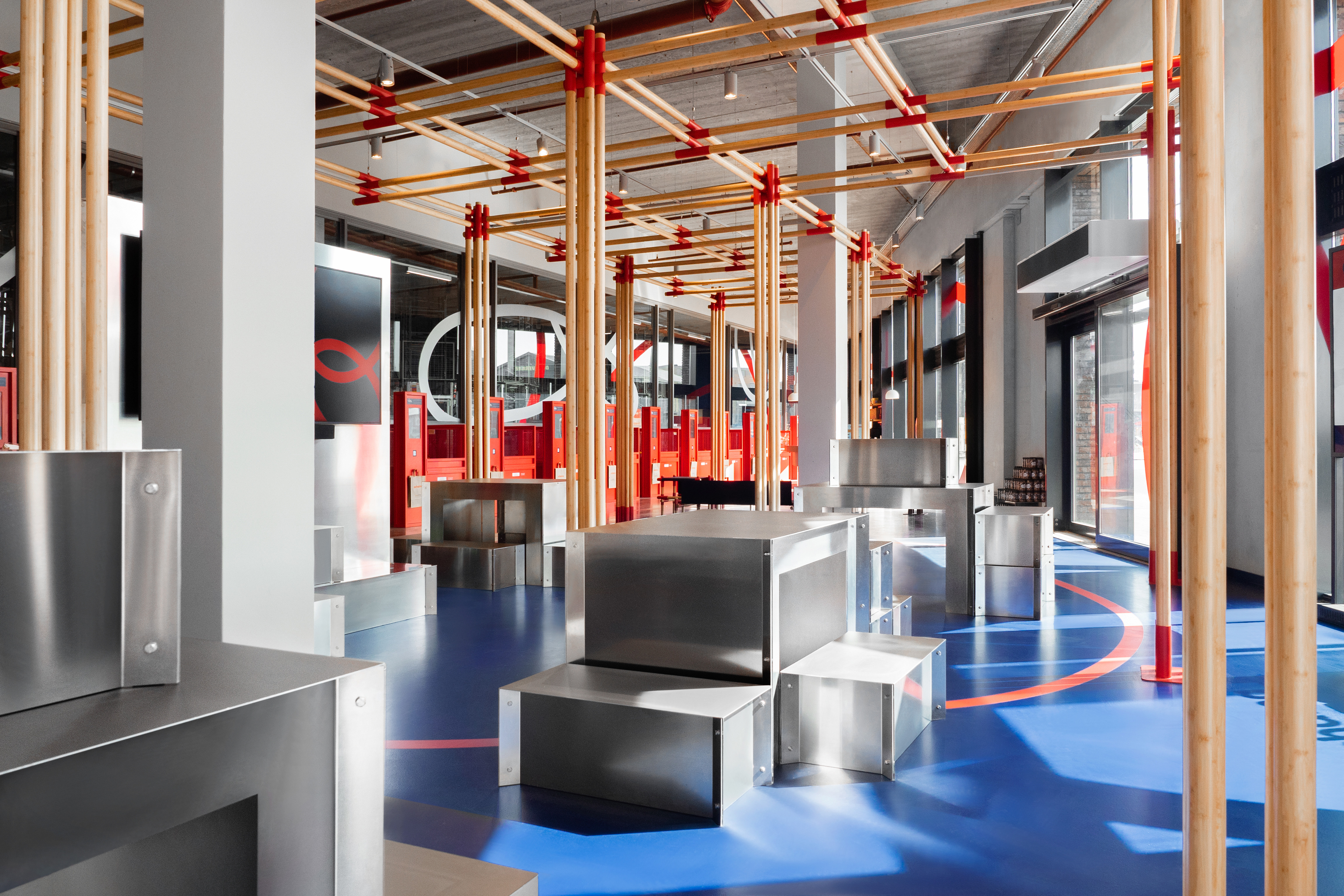 展厅
展厅

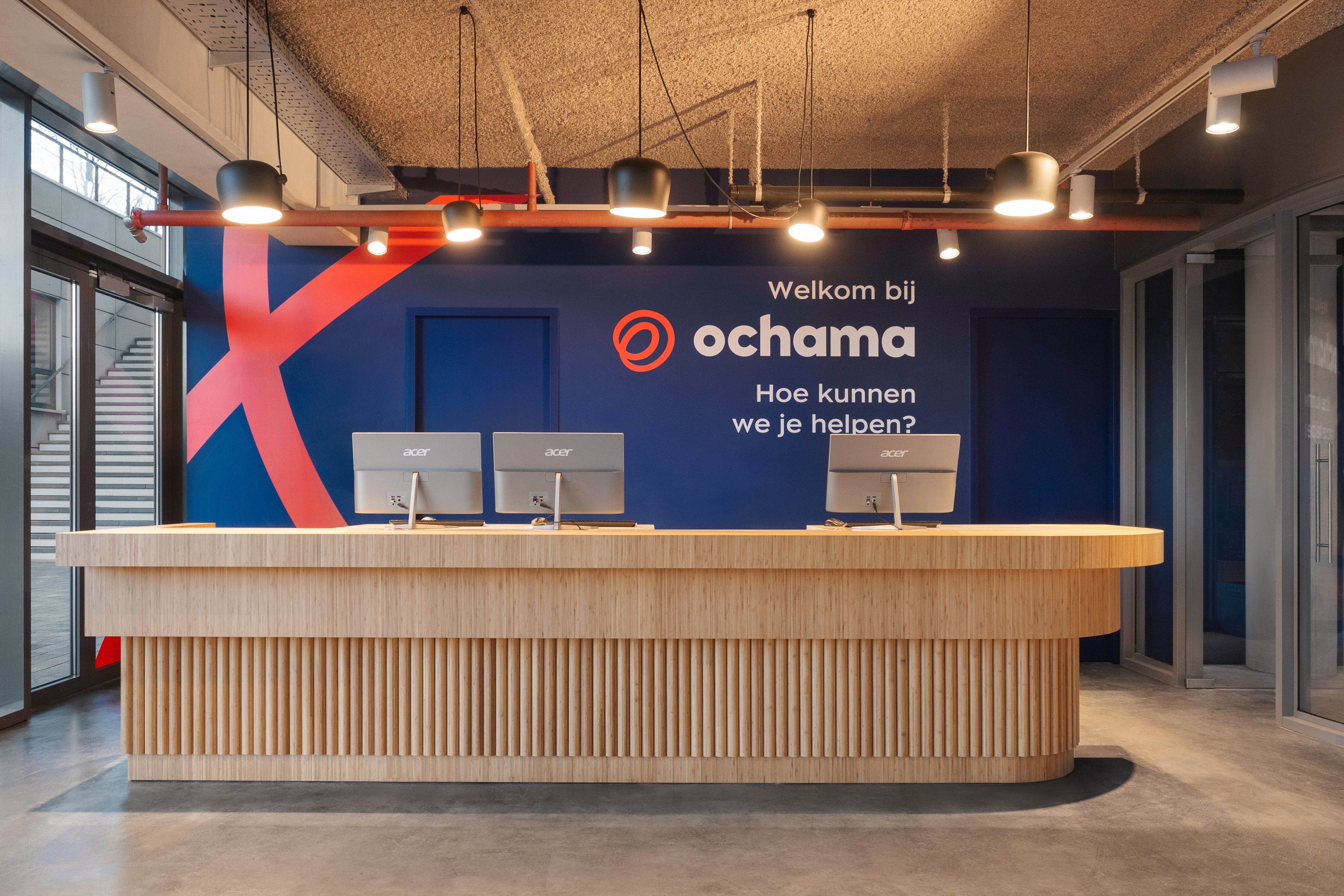 服务中心
服务中心